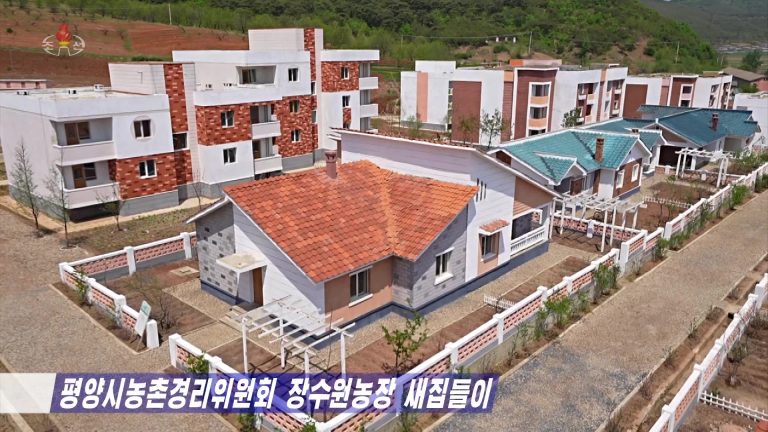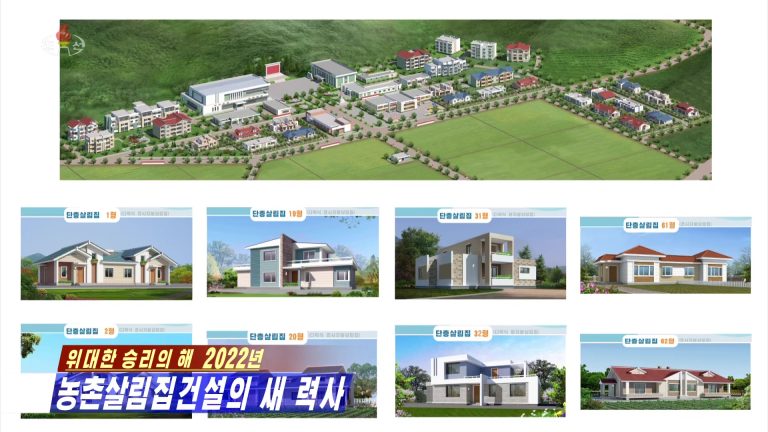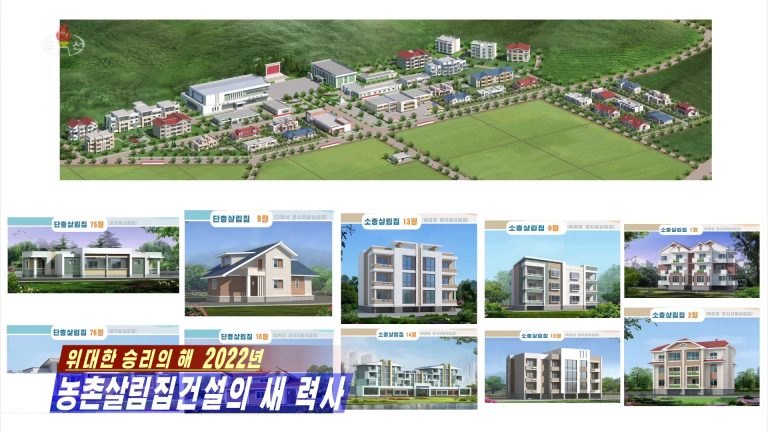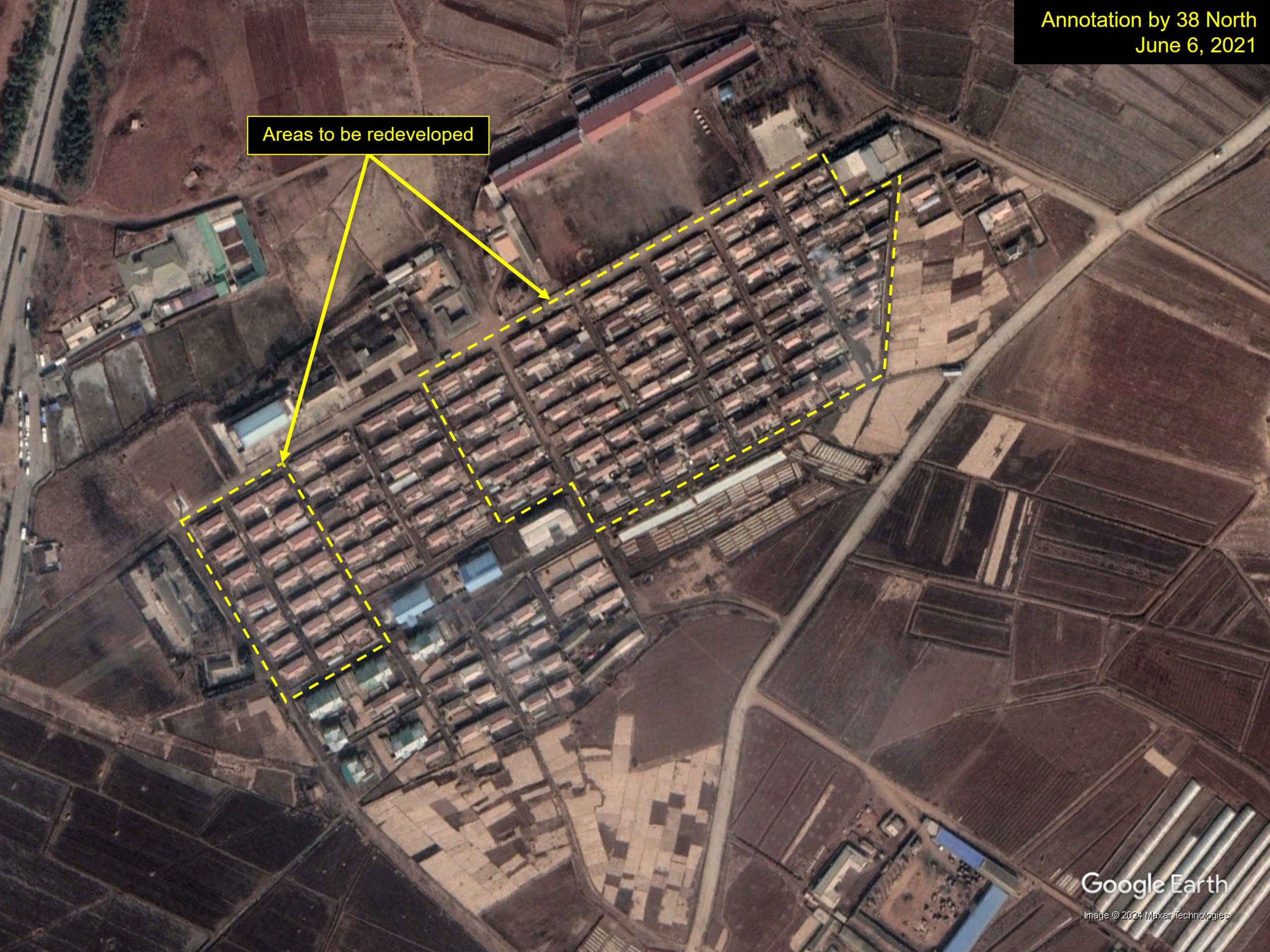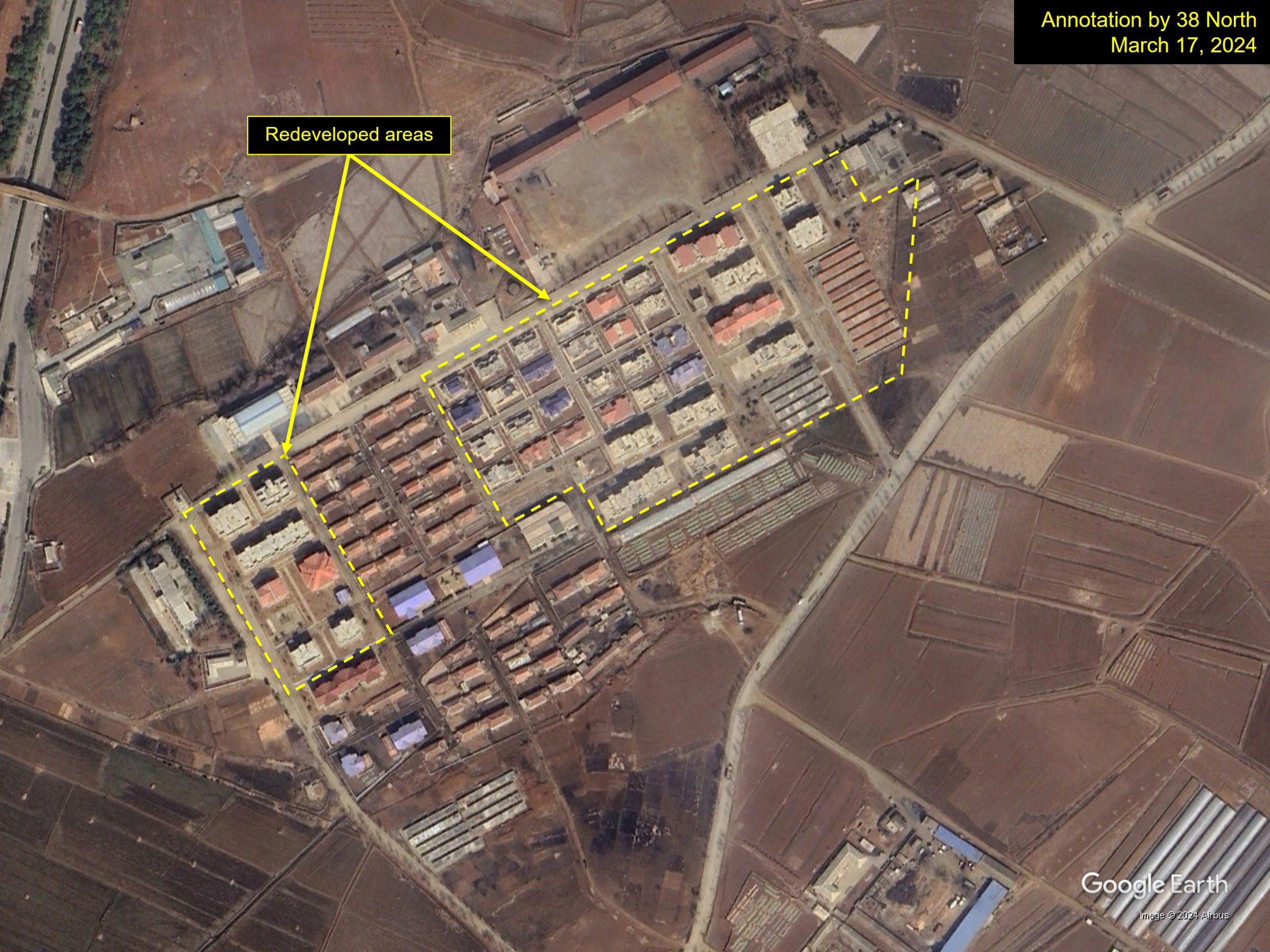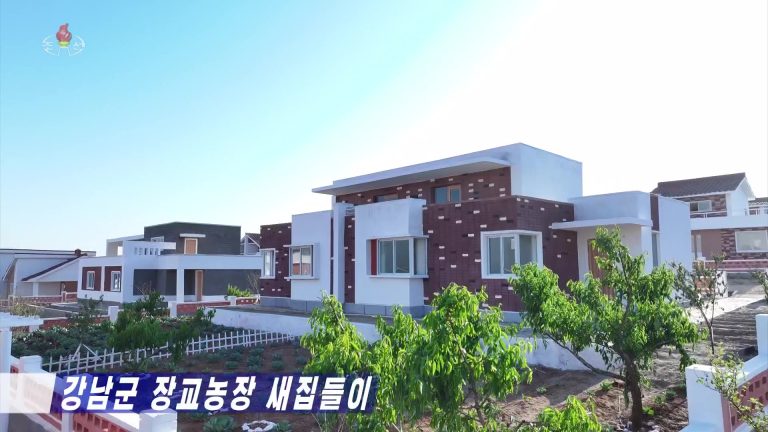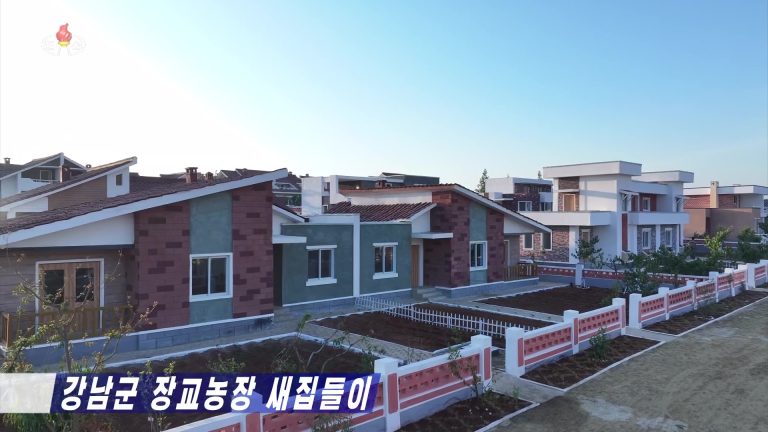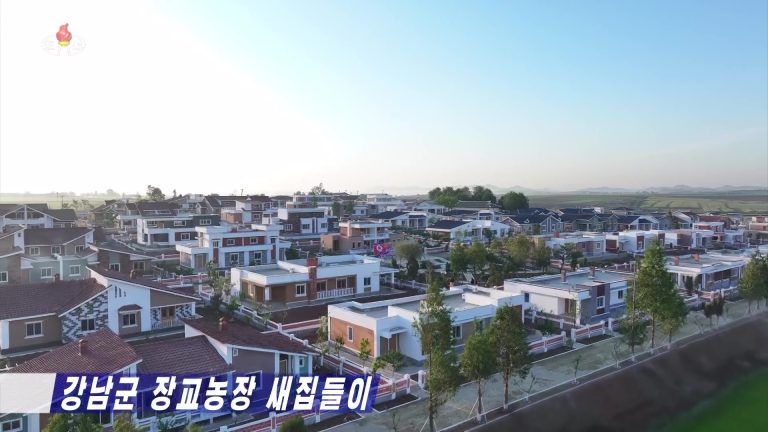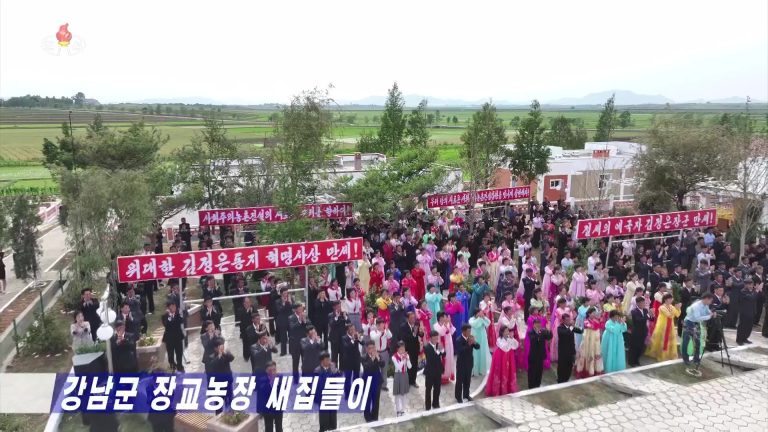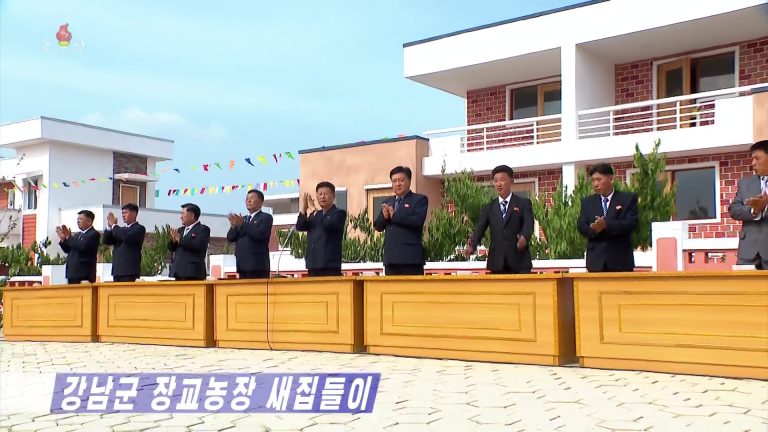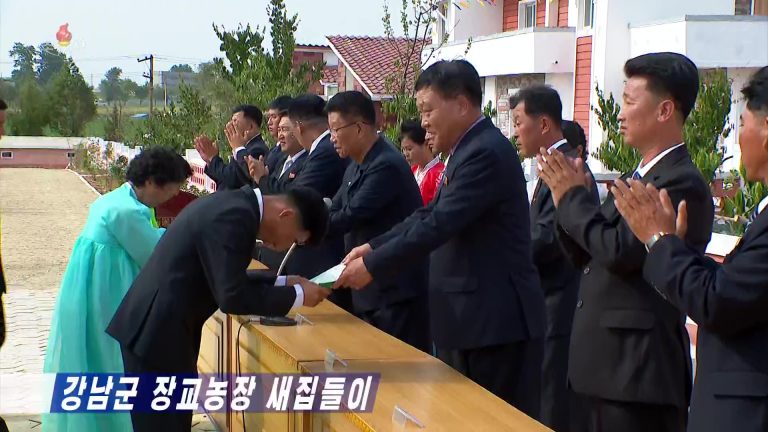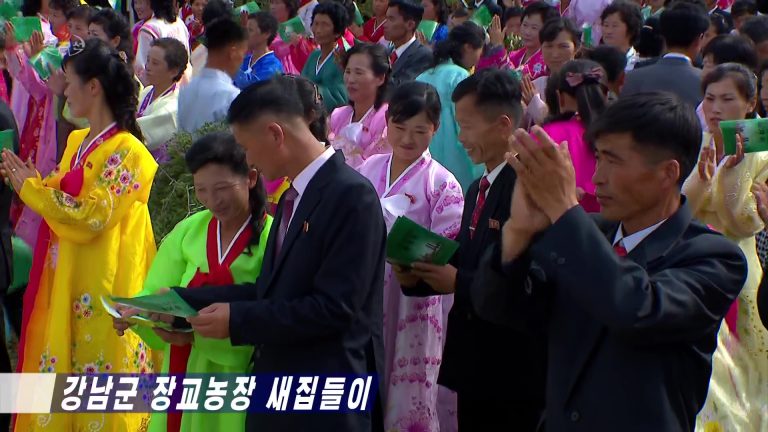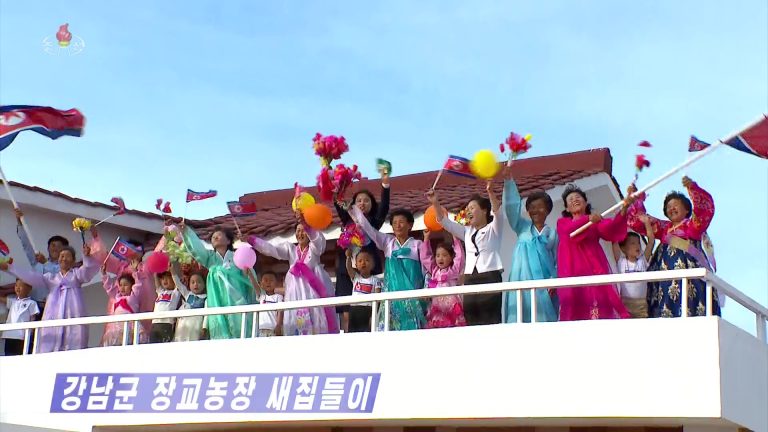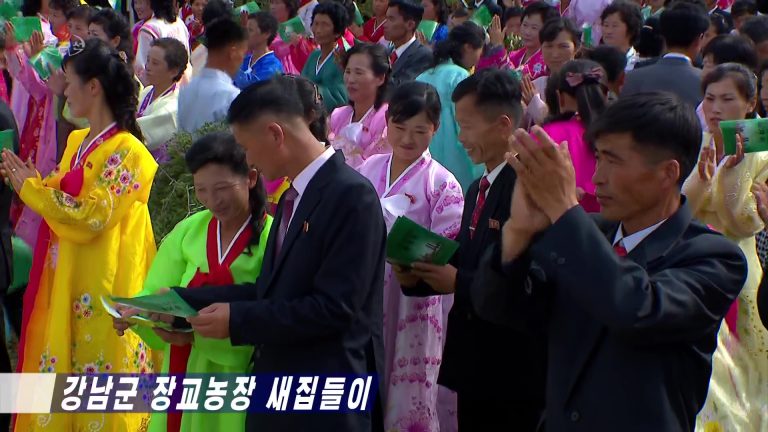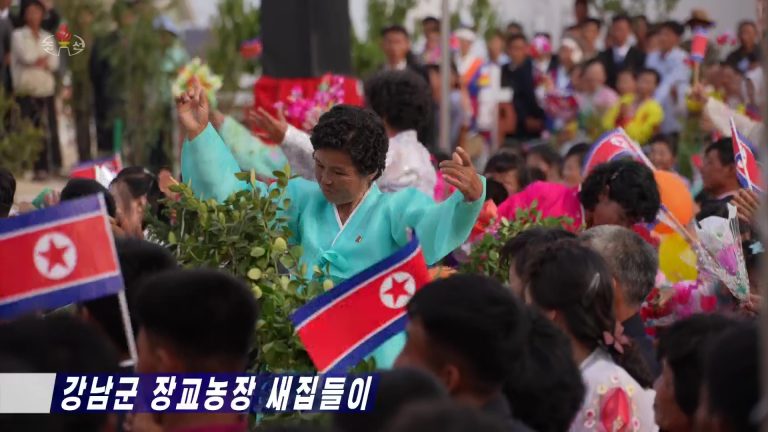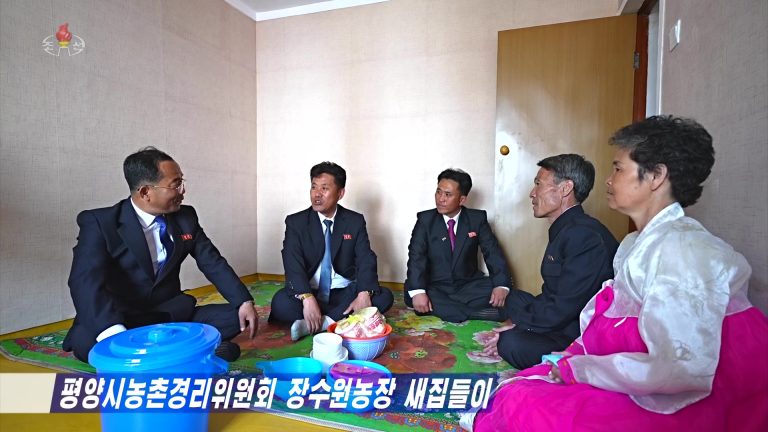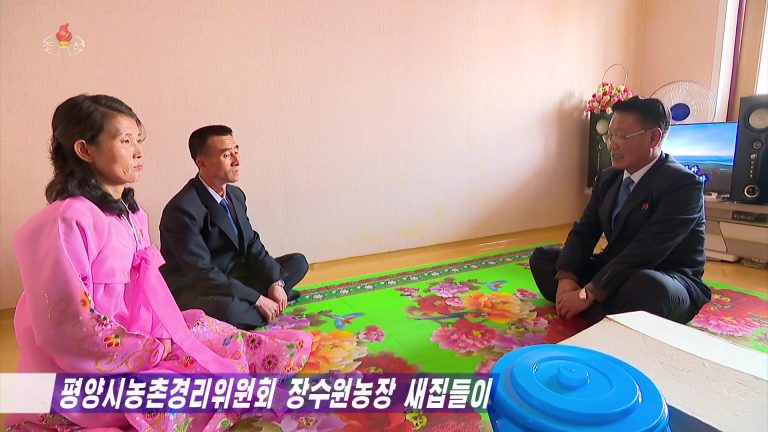North Korea’s Rural Development: The Houses and Move-in Day
North Korea’s plan to rebuild rural housing and reverse “the backwardness of the countryside” is having real effects across the country. Villages have been transformed as old neighborhoods have been demolished and replaced with rows of new single- and multi-story dwelling units.
From the onset of the rural development initiative through each step of the process, the project, its goals and its successes have been reinforced to the people through regular coverage in state-run media. It is rare for a week to go by without at least one project being featured on state television news; sometimes, new housing developments can be seen opening night after night.
This series has so far covered the background and context for the rural development initiative, analyzed its footprint across the country and highlighted some representative construction projects. This installment examines what is known about the actual houses and what happens on move-in day.
The Houses
One of the most evident aspects of the new rural housing is the variety of architectural styles employed. This is not simply a cookie-cutter style being replicated over and over across the country, but instead, a number of different designs have been observed so far, giving each of the developments a unique look. The use of accent colors on the building exteriors also gives a distinctive character to each new neighborhood. According to state media, “layouts of 100 styles of houses for coastal areas, plains and mountainous areas ensuring the political principles, modernity, cultural practice and regional features” were created, suggesting that the architecture and finishings of the houses vary by region.
It is difficult to get a true sense of the interior of the houses since they are not heavily covered in media, but the glimpses provided of the footprints on satellite imagery and through state-run media appear to show a relatively good level of finish with wallpaper and wooden or linoleum flooring. Each house appears to consist of several rooms, and some have second stories.
What is unclear, however, is the extent to which these new houses are equipped with consistent working utilities, such as water, heat, and electricity. Korean Central Television has shown water taps, although not running, and homes lit up at night. That said, it is uncertain how consistent the supply of electricity is, as most homes throughout North Korea are subject to frequent power outages, and some have been known to receive electricity only once per year.
The redeveloped areas do not just consist of housing. In some cases, additional schools, kindergartens, culture halls and clinics have also been built.
Move-in Day
The day that people move into their new housing is no doubt a joyous day for them; at least, this is how it is portrayed in state media. The ceremony that precedes the actual move-in appears to follow a set format, which has now been seen several times on state television.
At Janggyo Farm, for instance, ground clearance began in early 2022 while construction progressed in several stages. There were at least two move-in ceremonies: one on December 12, 2023, and another on June 5, 2024.
The entire development replaced over 100 single-story buildings with new single or two-story dwellings.
Figure 2a. Janggyo Farm before redevelopment. Image: Google Earth, annotation by 38 North. For media licensing options, please contact [email protected].; Figure 2b. Janggyo Farm housing redevelopment after first move-in ceremony but prior to the second phase. Image: Google Earth, annotation by 38 North. For media licensing options, please contact [email protected].
The first stage of move-in day is a ceremony where new residents and others gather to hear speeches by party officials. At Janggyo Farm, this included both the chief secretary of the Pyongyang Municipal Party Committee and the chairman of the Pyongyang Municipal Rural Economy Committee.
Around 200 people appear to have been in the crowd, clapping and cheering on cue while posters nearby declared “위대한 김정은동지 혁명사상 만세!” (Long live the revolutionary ideology of great Comrade Kim Jong Un) and “절세의 애국자 김정은장군 만세!” (Long live the peerless patriot General Kim Jong Un), making clear who the people were supposed to credit for their new housing.
After the speeches are over, villagers are invited forward to receive their residency permits. The single-page documents, titled “살림집리용 허가증” (Residency Use Permit), allow the recipient the right to live in the dwelling, which remains owned by the North Korean state.
The rear of the paper is headlined “살림집리용지의 준수사항” (Compliance Requirements for housing) and contains a number of rules associated with the housing.
Next, one or more villagers step forward to give speeches praising Kim Jong Un and the Workers’ Party for the new housing. The village then proceeds to celebrate the new housing. State TV is keen to show smiling, dancing villages happy at their good fortune.
Afterward, the residents head into their new homes.
Before the rural development initiative began, state television used to spend more time showing the insides of the new housing complexes, but recent coverage seems to focus more on the village party instead.
One glimpse into an apartment at Janggyo Farm showed a resident in a kitchen that appeared to have a tap for running water, and residents seated in a wallpapered living room on what appeared to be linoleum flooring or something similar.
All homes have portraits of Kim Il Sung and Kim Jong Il mounted on the main room wall. Sometimes, state TV shows new residents bowing to the portraits. The homes are also wired to the third radio network, North Korea’s internal audio system, which is used for sensitive news, messages to residents, ideological education and other propaganda.
Residents’ belongings, when shown, typically include an electric fan, flat-screen TV (up to about 32 inches in size), bedding and plastic kitchen goods. Some of these are reported to be housewarming gifts from the local party office.
The time and space devoted to covering the move-in ceremonies in state media is a good indication of the importance the regime is placing on this project from a propaganda perspective.
Conclusion
Announced by Kim Jong Un in late 2021, North Korea’s rural development initiative differs from other national projects in that the exact scope and scale were undefined at the time of its commencement. It is unclear how long this initiative will continue, and what milestones will be met along the way.
As noted in the first installment in this series, the distribution of housing across numerous counties suggests that the rural development initiative is nationwide, and will likely continue to spread in this manner. Some areas, like in Hwasong near Pyongyang, have even seen multiple phases of development, a trend expected to continue as the initiative progresses.
A recent Rodong Sinmun article reported that in the first half of 2024, “new dwelling houses for 18,000-odd families have been built at over 60 farms,” and housing for around 113,700 families has been built in other rural areas. Since the beginning of the project in 2021, rural housing has been built for around 44,000 families at farms throughout North Korea. In comparison, at the same meeting in 2021, Kim announced plans to build 50,000 apartments in Pyongyang over a five-year time horizon. This rural development initiative has exceeded that pace, with no signs of stopping in the near term.
Coupled with the recently announced Regional Development 20×10 plan, this rural development initiative is aimed at reaching a broad number of people and spreading political ideology:
Wonderful streets and modern villages have appeared one after another in the capital city of Pyongyang and provinces thanks to the Party and the government which spare nothing for the people and if it were the wish of the people and the better and happier future is coming closer as rural development and the Regional Development 20×10 Policy are being pushed ahead with.
This rural development initiative and the recently announced “Regional Development 20×10” plan are Kim Jong Un’s two top civilian economic projects. “People-first politics,” which has been played up in North Korean propaganda as one of Kim Jong Un’s governing principles, and the success of these projects is key to demonstrating to the populace that Kim is upholding his promise to the people to improve their livelihoods.

